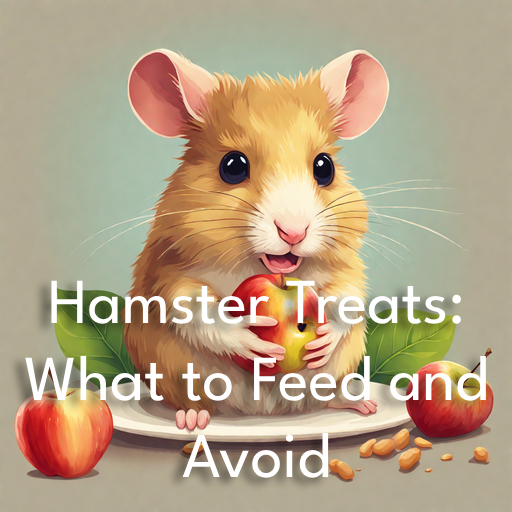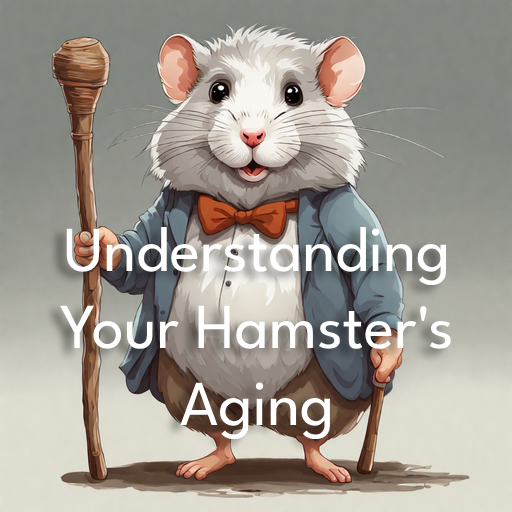When it comes to your furry friend’s well-being, a proper diet is essential. Just like us, hamsters need balanced and nutritious food to thrive. In this comprehensive guide, we’ll explore everything you need to know about hamster food for optimal health and happiness.
What do hamsters eat?
Let’s dive into the core elements of a hamster’s diet:
1. Hamster Pellets: These should form the foundation of your hamster’s diet. Hamster pellets are designed to provide the essential nutrients your pet needs to stay healthy and happy. They are a convenient and reliable source of vitamins and minerals, making them an excellent choice for your hamster’s daily meals. Make sure you choose high-quality pellets without artificial additives, fillers, or excessive preservatives. Our favorite with the most positive reviews is this one. It has the ingredients that hamsters eat in the wild, with a range of nutrients from grains, seeds, nuts, flowers, fruits, and vegetables to support optimal health.
2. Fresh Veggies and Fruits: Supplement your hamster’s diet with fresh vegetables and fruits.
Hamsters enjoy veggies such as carrots, cabbage, broccoli, spinach, cucumber, and courgette.
Add some herbs to that list: parsley, sage, basil, and coriander all goes well.
Fruits they prefer: apple, peach, pear, melon.
Don’t feed them citrus fruits (oranges, grapefruits, lemons) as some experts say it can be poisonous for them.
3. Can Hamsters eat meat? It may sound unusual, but meat can serve as a nutritious addition to a hamster’s diet. Wild hamsters include insects in their meals, and you can replicate this aspect of their diet by offering your pet live or dried crickets or mealworms. If handling insects makes you uncomfortable, consider providing cooked meat as an alternative source of protein. Cooked chicken and beef are both safe options that your hamster can enjoy. The inclusion of meat can add variety and essential protein to your hamster’s diet. When providing meat, ensure it’s well-cooked, unseasoned, and cut into small, manageable pieces for your pet.
4. Treats for hamsters: Treats can be a fun addition to your hamster’s diet, but they should be given sparingly. Nuts, boiled eggs, whole grain pieces of bread, and cereals are some of the common treats that hamsters love. They can serve as rewards or special snacks to enhance your hamster’s diet. For more tips on hamster treats, you can find helpful insights in our short article. Keep in mind that treats should be occasional and not constitute a significant part of your hamster’s diet. While they can add excitement and variety to their meals, it’s essential to maintain portion control to prevent overfeeding and potential health issues.
Understanding Your Hamster’s Dietary Needs
Hamsters have specific dietary requirements to stay healthy and active. Understanding their needs is the first step toward providing the best nutrition.
Types of Hamsters: Different hamster breeds may have slightly varied dietary preferences. While hamsters are primarily herbivores, they also have an omnivorous side, meaning they can eat both plants and some animal proteins.
- Syrian Hamsters: These larger hamsters are omnivores, meaning they can eat a variety of foods. They typically enjoy a mix of high-quality hamster pellets, fresh fruits, and vegetables. Syrian hamsters may also appreciate occasional treats like mealworms or small pieces of cooked chicken. It’s essential to provide a balanced diet to prevent obesity.
- Dwarf Hamsters (Robo, Campbell’s, Winter White): Dwarf hamsters are primarily herbivores, meaning their diet consists mainly of plant-based foods. High-quality hamster pellets should form the basis of their diet. They also enjoy fresh vegetables like carrots, broccoli, and spinach. Occasional treats like a small piece of apple or a raisin can add variety.
- Chinese Hamsters: Chinese hamsters are omnivorous, similar to Syrian hamsters. They can eat a mix of hamster pellets, fresh fruits, and vegetables. Insects such as mealworms or crickets can be an occasional protein source. Like Syrians, they should have a balanced diet to maintain their health.
- Roborovski Hamsters: These tiny hamsters are primarily herbivores. Their diet should consist mainly of hamster pellets and fresh vegetables like cucumber, carrot, and zucchini. Fruits can be an occasional treat, but they should be fed sparingly due to their high sugar content.
- Campbell’s and Winter White Dwarf Hamsters: These dwarf hamsters have similar dietary preferences to Roborovski hamsters. A diet of high-quality hamster pellets and fresh vegetables is suitable. As with all hamsters, treats should be given in moderation.
- Russian Campbell’s Dwarf Hamsters: These dwarf hamsters share dietary preferences with their close relatives. Stick to a diet of pellets and fresh vegetables for their primary nutrition.
Providing Fresh Water
Access to clean, fresh water is crucial for your hamster’s well-being:
Water Dispensers: Use a reliable water dispenser to ensure your hamster always has access to clean water. These dispensers are designed to minimize contamination and keep the water fresh. Our top pick, with the most positive reviews, is this one. It’s essential to select a water dispenser that’s easy for your hamster to access and prevents spills, keeping their cage dry and comfortable.
Regular Refills: Check and refill the water bowl or dispenser daily to prevent dehydration. Hamsters may not drink a significant amount of water at once, but ensuring a constant supply is essential to meet their hydration needs.
Hamster Food Tips and Frequency
Establishing a feeding routine is essential for your hamster’s health:
Meal Frequency: Hamsters are nocturnal creatures, so it’s best to feed them in the evening when they’re most active. This schedule aligns with their natural instincts, making it easier for them to consume their meals when they’re alert and active.
Portion Control: Avoid overfeeding your hamster. A teaspoon of pellets and a small amount of fresh food should suffice for daily meals. Portion control is essential for maintaining a healthy weight, as hamsters are prone to obesity.
Monitoring Your Hamster’s Health
A healthy diet goes hand-in-hand with regular health checks:
Signs of Illness: Be vigilant about your hamster’s behavior and appearance. Any sudden changes in activity levels, weight loss, changes in fur quality, or other unusual behaviors could be signs of illness. You can find more detailed information on recognizing illness in hamsters in our guide.
Veterinary Care:
Regular check-ups with a veterinarian who specializes in small animals are essential for preventive care. Consult your vet about your hamster’s diet and any specific nutritional needs, especially if you notice changes in their health or behavior. Early intervention can help address health issues promptly and effectively.
Hamster Food Conclusion
By providing balanced hamster food and fresh water, and regularly monitoring your hamster’s health, you can ensure a long, happy, and healthy life for your beloved pet. Remember that every hamster is unique, so pay attention to their preferences and adjust their diet accordingly. Your commitment to their well-being will result in a vibrant and content life for your hamster companion.









